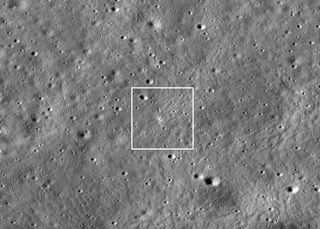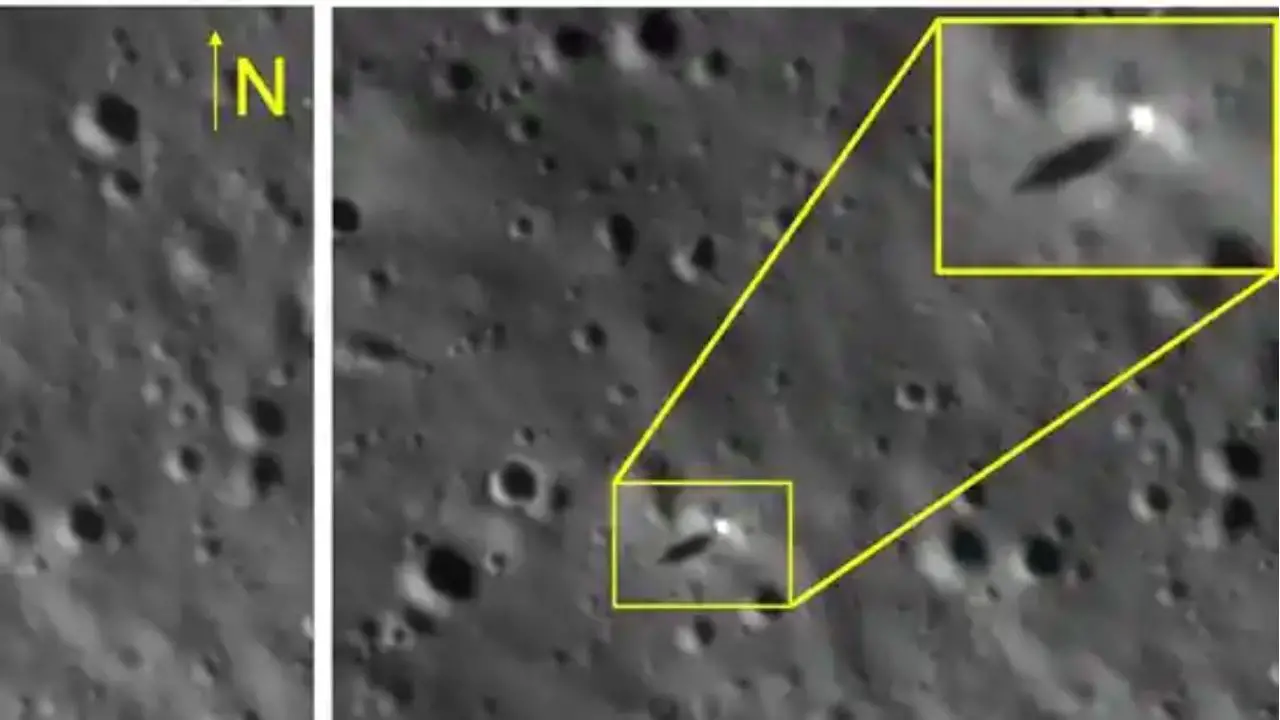We are all aware that India’s Chandrayaan-3 lander has made history by achieving a historic touchdown close to the mysterious lunar south pole, which is an unprecedented feat.
This incredible achievement was completed by the tenacious lander Vikram, which was assisted by the small yet mighty rover Pragyan.
Together, they set out on a voyage of discovery, sifting through the mysteries of the lunar landscape for over a month before giving in to the terrible hardships of the lunar night, where temperatures drop to bone-chilling lows of -150*.
The lens of NASA’s Lunar Reconnaissance Orbiter (LRO), which managed to snap a striking aerial image of Vikram on August 27, just four days after its triumphant landing, added to the significance of this milestone.

As a result of the interaction between Vikram’s rocket exhaust and the fine-grained regolith, or lunar soil, this intriguing image revealed Vikram’s existence by creating a dark rectangular shadow within a bright halo.
Future space exploration efforts hold enticing promise for the mysterious lunar south pole. Large stores of water ice are thought to exist within its icy depths, a valuable resource that might perhaps support human outposts and provide as a crucial supply of propellant for spacecraft leaving the Moon’s surface.
As a result, a variety of upcoming missions, including robotic forays and, eventually, human expeditions, have made the poles their top priorities.
NASA’s Artemis 3 is one such ambitious project, with plans to land astronauts close to the southern polar area of the moon by the end of 2025 or early 2026.
Beyond the initial mission, NASA’s grand goal aims to create one or more bases in this strategically important lunar location over the coming years.
It is important to note that Chandrayaan-3 from India was not the only competitor in this moon race. In August 2023, Russia attempted to enter the contest by attempting to land its own lunar vehicle close to the south pole.
Unfortunately, the Luna-25 lander representing their mission ran into an unexpected anomaly, which resulted in a disastrous lunar crash. LRO managed to take pictures of the resulting lunar terrain, which was now graced with a freshly formed crater of roughly 33 feet (10 meters) in breadth. This accident’s consequences was not lost on LRO.
Vikram’s successful landing represents a huge accomplishment for India’s developing space program as well as a critical step toward solving the mystery of the moon.
The scientific community’s knowledge of the lunar south pole and the priceless resources it protects will definitely be improved by the data and photos gathered from this successful mission, paving the way for further lunar research.
Here are some interesting details about the Chandrayaan 3 lander and rover
- The Vikram lander weighs roughly 2.4 tons and is about the size of a vehicle.
- The Pragyan rover weighs about 65 kilos and is about the size of a microwave.
- Because it is permanently under darkness, the south pole of the moon is regarded to be an excellent area to seek for water ice because it is less likely to sublimate (change from solid to gas).
- The upcoming NASA Artemis 3 mission will send a crew to the moon for the first time in more than 50 years.
- Since the Soviet Union’s Luna-24 mission in 1976, the Russian Luna-25 lander was the first attempt to land a spacecraft close to the lunar south pole.
Hopefully, this was useful.








